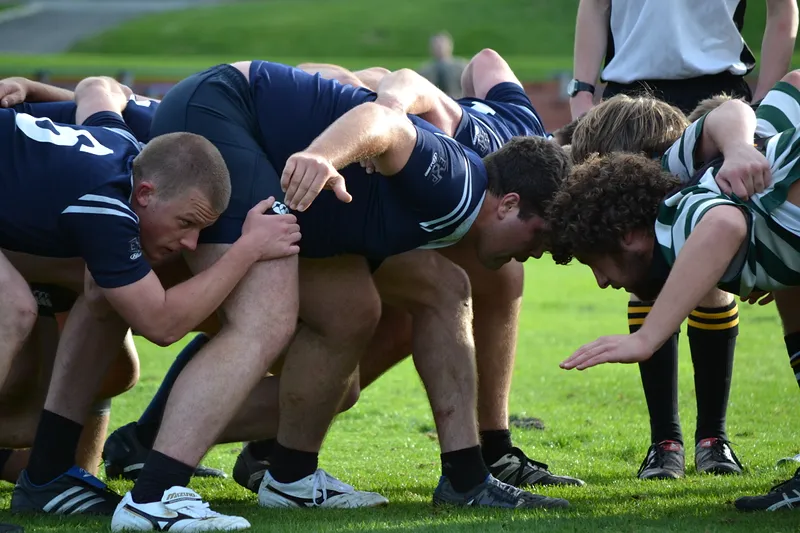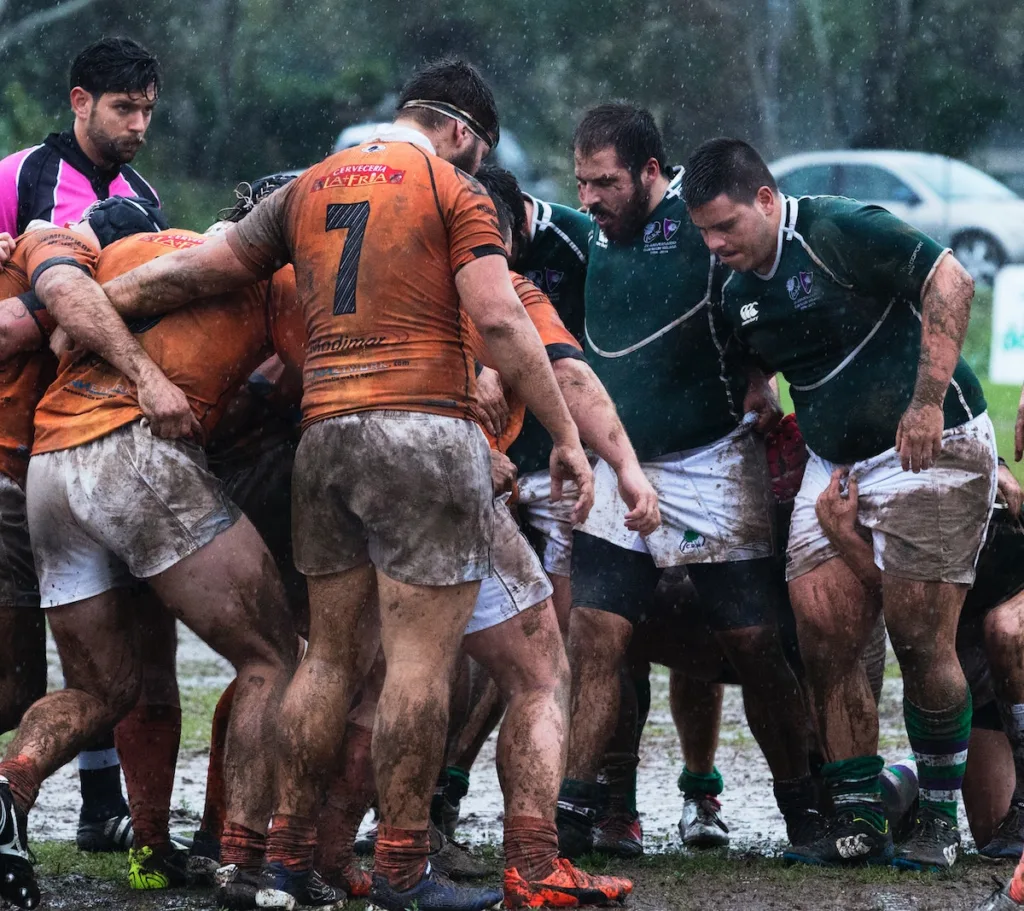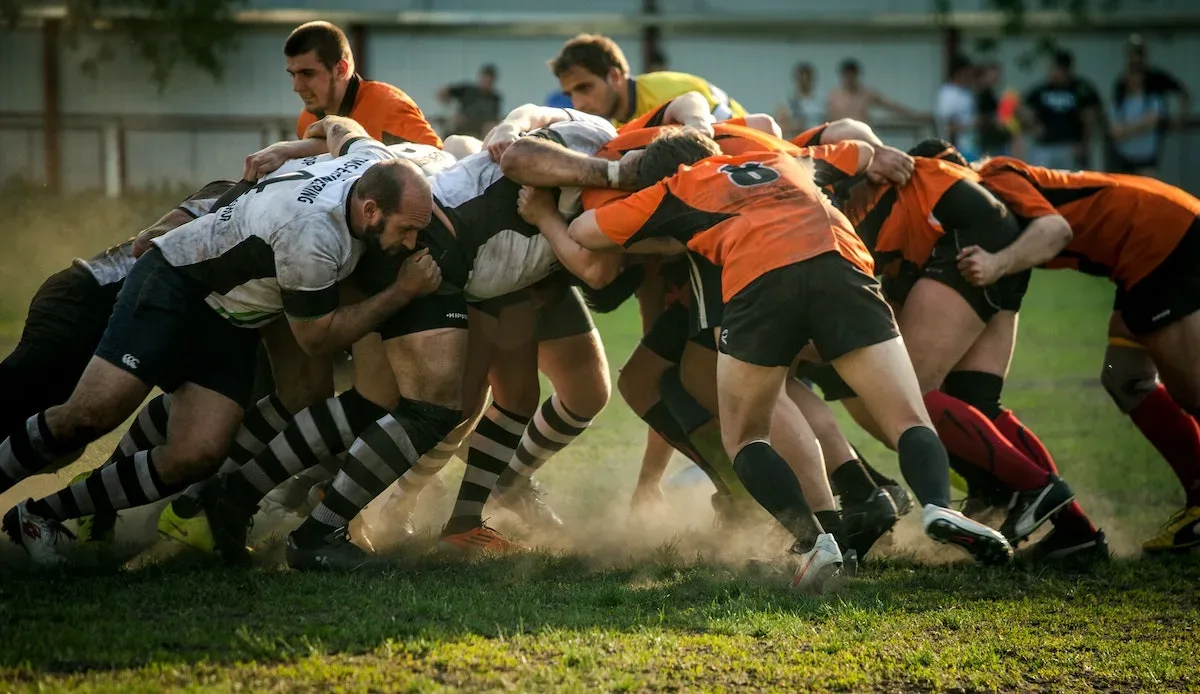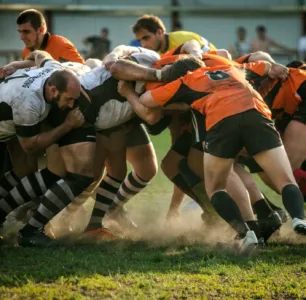A prop forward is a position in Rugby Union and Rugby League that is typically played by a player who is physically strong and robust. The term “prop” comes from the fact that these players are often used to prop up the scrum, which is a set piece in both Rugby codes where the forwards from each team pack down against each other in a tight formation.
Prop forwards are responsible for providing stability to the scrum and pushing against the opposition’s pack to try to gain control of the ball. They also play a key role in rucks and mauls, where they use their strength to help secure the ball for their team.
What is the difference between a loose head and tight head prop
In Rugby Union, a prop forward can play as either a loose head or a tight head prop. The main difference between these two positions lies in the position of their head in the scrum.
A loose head prop’s head is positioned on the outside of the scrum, and their left arm is used to bind with the hooker. The loose head prop is responsible for maintaining the stability of the scrum on their side of the field and pushing against the opposition’s tight head prop.
On the other hand, a tight head prop’s head is positioned on the inside of the scrum, and their right arm is used to bind with the hooker. The tight head prop is responsible for maintaining the stability of the scrum and pushing against the opposition’s loose head prop. The tight head prop is typically the stronger and more physically robust of the two props and is relied upon to provide a solid platform for the rest of the pack.
In Rugby League, there is no distinction between a loose head and tight head prop, and the forwards play in a more dynamic and less structured manner than in Rugby Union.

The Prop’s role
A prop forward is expected to perform a number of key tasks in both Rugby Union and Rugby League. These include:
- Scrumming: As mentioned earlier, the primary role of a prop forward is to pack down in the scrum and use their strength and power to push against the opposition’s pack. They are responsible for maintaining the stability of the scrum and helping to secure the ball for their team.
- Rucking and Mauling: Props also play an important role in rucks and mauls, where they use their size and strength to help secure the ball for their team. They will often be tasked with clearing out opposition players from around the ball to allow their own team to win possession.
- Carrying the ball: While not as common as other forwards, props can also be relied upon to carry the ball in both Rugby Union and Rugby League. They use their size and power to run with the ball and make ground for their team.
- Tackling: Props are also expected to defend, and they use their size and strength to make tackles and stop opposition attackers.
- Lineout Jumping: In Rugby Union, props may also be used as jumpers in the lineout, where they use their height and athleticism to contest for the ball and win possession for their team.
Overall, a prop forward is expected to be a versatile and physically robust player who can play a key role in both attack and defence for their team.

Physical characteristics of props.
Props are typically some of the largest and physically strongest players on the field in Rugby Union and Rugby League. They are expected to have the following physical characteristics:
- Size: Props are typically taller and heavier than other players, with a height ranging from 6’2″ to 6’6″ and a weight ranging from 220 to 300 pounds. This size gives them the power and leverage needed to scrum effectively and make strong tackles.
- Strength: Props need to be extremely strong, with a focus on upper body strength. This strength allows them to push against the opposition’s pack in the scrum and make effective tackles.
- Endurance: Props also need to have good endurance, as they are often involved in extended periods of physical exertion, such as scrums and rucks.
- Agility: While not as important as size and strength, props also need to be agile and able to move quickly, especially in Rugby League where the game is more open and dynamic.
- Technique: Props need to have a good understanding of the technical aspects of scrummaging and rucking, as well as the tactical elements
Famous women props
It is difficult to determine the “best” women props, as this can vary depending on factors such as personal opinion, recent form, and individual strengths and weaknesses. However, here are a few well-respected female props in the sport of Rugby Union:
- Rochelle Clark: Rochelle Clark is an English prop who has represented her country over 140 times. She is considered one of the greatest female props of all time and has won numerous awards and accolades throughout her career.
- Emily Robinson: Emily Robinson is an Australian prop who has played for the Wallaroos and the NSW Waratahs. She is known for her powerful scrummaging and her ability to make key contributions in both attack and defence.
- Samantha Alderman: Samantha Alderman is a New Zealand prop who has played for the Black Ferns and the Bay of Plenty. She is known for her strong scrummaging and her ability to provide a solid platform for her team’s backline.
- Grete Šadeiko: Grete Šadeiko is an Estonian prop who has played for several clubs in Europe, including RC Vainode-Võru and Tallinn Ladies. She is known for her powerful scrummaging and her ability to make a difference in tight matches.
These are just a few examples, and there are many other talented women props playing the sport at the highest level.
Irish Female props.
Here are a few well-respected female props from Ireland in Rugby Union:
- Lindsay Peat: Lindsay Peat is an Irish prop who has represented her country and played for clubs such as Leinster and the Railway Union. She is known for her powerful scrummaging and her contributions to the Irish Women’s Rugby team.
- Fiona O’Brien: Fiona O’Brien is a former Irish prop who has represented her country and played for clubs such as UL Bohemians and Leinster. She is considered one of the most influential female props in Irish rugby history.
- Ailis Egan: Ailis Egan is an Irish prop who has represented her country and played for clubs such as Old Belvedere and Connacht. She is known for her strong scrummaging and her ability to provide a solid platform for her team’s backline.
- Claire Molloy: Claire Molloy is an Irish prop who has represented her country and played for clubs such as Wasps and Bristol Bears. She is known for her powerful scrummaging and her leadership on and off the field.
- Christy Haney. Irish, Leinster and Blackrock tighthead who also coaches Girls for Blackrock Rugby club
These are just a few examples, and there are many other talented female props from Ireland playing the sport at the highest level.
How can I become a better prop
If you want to become a better prop, there are several steps you can take:
- Focus on strength training: As a prop, your primary job is to scrum, ruck, and tackle, so it is important to focus on building strength and power in your upper body and legs. This can be achieved through a combination of weightlifting and resistance training exercises, such as squats, deadlifts, and bench presses.
- Improve your technique: Scrumming and rucking are technical skills that require proper technique to be effective. It is important to work with a coach or experienced prop to learn and refine the proper techniques for these skills.
- Condition your body: Props are often involved in extended periods of physical exertion, so it is important to build up your endurance and stamina. This can be achieved through a combination of cardiovascular training, such as running and cycling, and rugby-specific drills that mimic the demands of the game.
- Study the game: Understanding the tactics and strategies of the game can help you make better decisions on the field. Watch professional matches and analyse the play of successful props to learn from their techniques and decision-making skills.
- Work on your agility and footwork: While size and strength are important for props, agility and footwork can also be valuable skills, especially in Rugby League where the game is more open and dynamic. Practising agility drills and footwork exercises can help you become more effective in attack and defence.
Remember, becoming a better prop takes time and dedication, so be patient and stick to your training plan.

